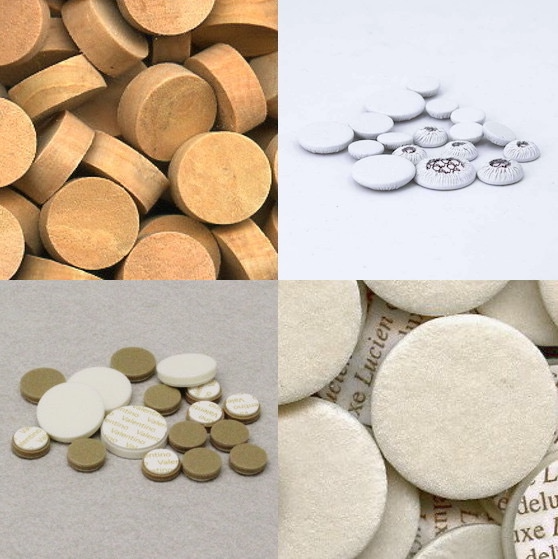
Which clarinet pads should I chose?
Share
This has been a question asked for years, but there is surprisingly little information regarding the differences between pad types. While it may be difficult to tell which materials may work best for your playing needs, this post may help you decide what to install on your clarinet.
It’s important to note that proper installation, a good seat around a properly-finished tone hole, and correct venting of the pad is of the utmost importance. Choosing between different pad materials rounds out the instrument’s playability or tonal character. Included in today’s comparison will be: cork, leather, skin, and synthetic pads. These pads are all available in NYCW’s repair shop!
Cork
Cork pads have been highly regarded for years, particularly for use on the upper joint. These offer a lovely center and core to the sound and allow the sound to project particularly well. Cork pads also do not stick in humid conditions. Another great benefit is the edges of the pad can be beveled to allow for additional venting. This is incredibly helpful for notes that are commonly stuffy or tend to have a “hissing” sound, such as C#/G#. In regards to the action of the keys, some players really enjoy the precise feel as these pads are harder.
Leather
Leather pads have many attractive qualities. They come in sheepskin, kid leather and kangaroo leather. We are partial to sheepskin and kid leather in our shop. You may commonly see them outfitted either on a clarinet’s lower joint or both the upper and lower joints. The action of the keys feels slightly softer due to leather being a more supple material. The felt behind the leather skin plays a role in firmness of the pad. Pressed felt will feel slightly harder and woven felt will feel softer. Leather pads allow the player to achieve a smoother legato, in our experience, and tend to make the sound slightly more round compared to other pad types.
Skin
This is a more traditional type of pad and frequently come installed from instrument factories on many types of clarinets from student to professional. They can be referred to as fish skin or bladder pads. As with leather pads, the firmness of the felt plays a role in how these pads feel under the fingers. While they may not last as long as some others on this list, they can last nicely if the instrument is well-maintained.
Synthetic
Valentino, Kraus OmniPads, EZ Pads, Pisoni ProCls and other synthetics are unique types of pads that check many boxes for clarinetists. They are made from a synthetic foam type material and come in multiple varieties. The Valentino greenback pads are softer or spongey while the masters pads are a bit harder. The choice of many players, synthetic pads last a very long time, seal incredibly well, are easy to install, and do not stick in humid conditions. If debris forms on the pads over time, it is easy to clean off. They seal fast and, in our experience, do not create as smooth a legato as other materials. Synthetic pads are constructed in multiple layers that ensure a stable pad that creates a reliable seat around the tone hole.
Just like many other things about the clarinet, pad choices can be very personal. Some players may prefer a softer touch for the key action, added projection for playing with the orchestra, or lack of sticking because they live in a particular climate. If you have any questions or would like additional info about which pads or other repairs may work best for your needs, please feel free to contact us!
